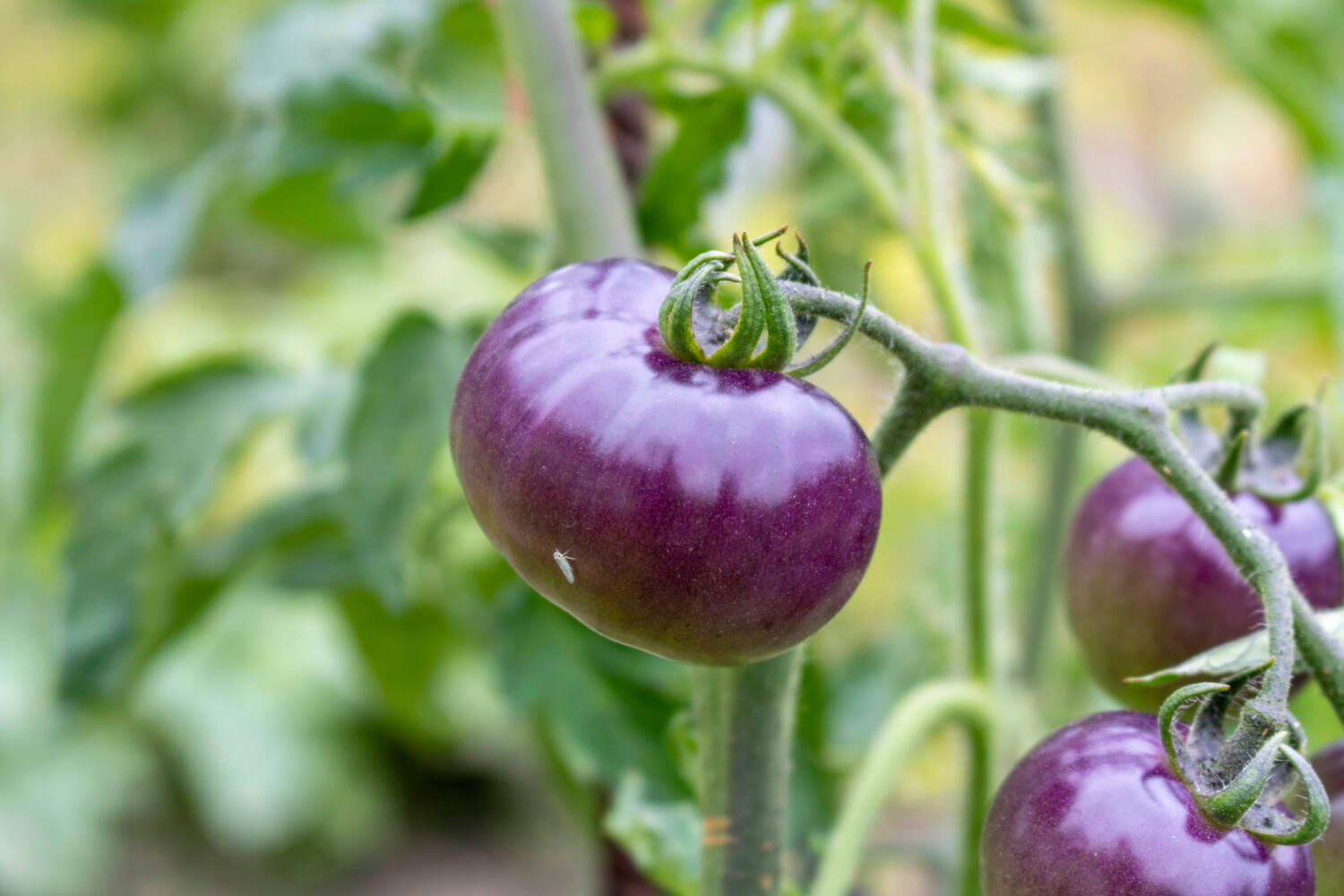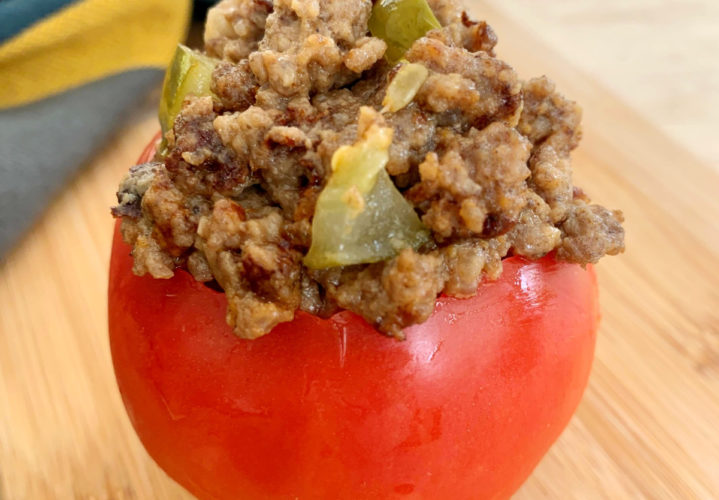Flavorful purple tomatoes are coming to grocery stores soon

A USDA-approved genetically-modified tomato hasn’t hit store shelves yet but is already causing quite a stir. Developed by a team of scientists, the juicy veggies are being touted by nutrition experts as being even better than red varieties. In a nutshell, researchers combined snapdragon genes with tomato cell DNA to create a new variety of tomato that’s technically a genetically modified organism (GMO). By doing this, the scientists added a compound called anthocyanins, a group of deep red, purple and blue plant pigments that are part of a class called flavonoids, known for their antioxidant capabilities.
The tomatoes were approved by the U.S. Department of Agriculture in September 2022, after more than 15 years of development by researchers at Norfolk Plant Sciences. Expected to hit shelves sometime this year, the purple tomatoes feel, smell and taste just like regular red tomatoes — only they’re a different color, inside and out.
We are interrupting your timeline with a breaking news on the #BigPurpleTomato🎉
The @USDA_APHIS found that the tomato is unlikely to pose an increased plant pest risk compared to other cultivated tomatoes, & has approved it for planting in the US.
More:https://t.co/uRhUYTWif0 pic.twitter.com/8Ak1NTbsyC— NorfolkPlantSciences (@BigPurpleTomato) September 7, 2022
MORE: Companion plants for tomatoes: The best and worst plants to put next to your tomatoes
Nutritional Value of Purple Tomatoes
From ketchup to chili, tomatoes are a staple ingredient in a variety of recipes. When it comes to purple tomatoes, research has shown that they have the same positive health benefits as their red counterparts, but they also have a longer shelf life — possibly up to double that of red tomatoes. Similar to red varieties, purple tomatoes contain calcium, vitamins C & K, folate, beta-carotene and potassium, plus the additional high levels of anthocyanin.
Red tomatoes are naturally high in lycopene, which studies have shown is linked with a decrease in rates of cancer and cardiovascular disease. Purple tomatoes still contain lycopene, as well as added antioxidants in the form of anthocyanins. Basically, in addition to the normal nutritional benefits of a red tomato, consumers get the added dose of what you’d find in a serving of blueberries, blackcurrants, acai or pomegranates.
While there aren’t any studies out yet on how humans have benefitted from consuming purple tomatoes, one study done on mice found it drastically extended their life span.
MORE: These easy stuffed tomatoes are a low-carb alternative to cheeseburgers
What To Know About GMOs
Any animal, plant or microbe with lab-altered DNA is considered to be a genetically modified organism, and they’ve been in the food supply for the past two decades. Studied by the FDA and approved as safe for consumption. The FDA claims GMOs, also known as bioengineered foods, aren’t affected in ways that would increase the risk of cancer for either humans or animals. Commonly found U.S.-grown GMOs include corn and soybeans. Oftentimes the GMO is created to resist insect pests or to tolerate herbicides used to kill surrounding weeds.
How To Eat Purple Tomatoes
Health experts routinely recommend eating fruits and vegetables in an array of colors, and purple tomatoes undoubtedly add a jolt of color to any plate. Adding them to your diet is easy. Just swap in purple tomatoes in lieu of red varieties in any recipe that normally calls for them, like marinara bases or tossed on top of salads. Slice them into sandwiches or build a margarita pizza with them. The sky’s the limit.
Would you get excited to try a purple tomato when it hits the shelves? If it feels like too much of a leap, you can always get the same purple-hued fix from eggplants, purple potatoes, red cabbage and more.







